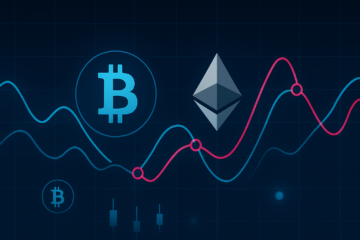The US stock market edged higher after the announcement of another Covid-19 vaccine breakthrough led by AstraZeneca and Oxford University, yielding higher levels of efficacy than what regulators seek. This development reflected on the markets by a 0.6% rise in S&P 500, outrunning the tech-heavy Nasdaq composite that advanced 0.2%. Moreover, the rollout of a vaccine triggered optimism within the market together with hopes of a global recovery from the coronavirus crises nearing. The sectors that got a boost from this investor optimism were economically sensitive sectors, such as energy and financials. Furthermore, the rally in global stocks hit a pause on Wednesday after the disappointing US jobless announcement. S&P 500 closed at 3,638.35 with weekly gain of 0.24%. Dow-Jones Industrial Average Index (DJIA) was up 0.13% reaching 29,910.37.
Following the vaccine news, 10 and 30 year US yields have not meaningfully picked up, which might signify that big investors are still holding back from the “back to normal life” trading. This hesitance explains the lack of a forceful drop in price of US government bond prices.
On the currency side, the EUR/USD grew by 0.43%, soaring from 1.1913 to 1.1967 with the lowest mark of 1.1800 on Monday. The dollar index, which reflects the performance of the dollar against its major peers ended the week at 91.78 on Friday, recording a weekly loss of 0.16%.
Europe
European equities struggled for direction on Thursday, after a rush in coronavirus cases in the US and tightening restrictions in Europe held back a rally driven by optimism over vaccines. But investors are still indecisive in the sense that there exists rising optimism about a future world where vaccines reduce the externalities of the pandemic; however, current data reflects how the pandemic is making life harder and harder. Europe’s mixed session came after Angela Merkel, Germany’s chancellor, announced on Wednesday that the country’s partial lockdown would remain until at least December 20 and might be prolonged into January.
Sector-wise, technology shares were amongst the best performers in Europe, as money flowed back to firms set to benefit from extended lockdowns. The economically sensitive energy sector was the weakest performer on the Stoxx 600, while banking and utilities dragged the FTSE 100 lower.
Last March, the ECB banned eurozone banks to stop all dividends and share buybacks to conserve €30bn of capital. The Vice-chair of the ECB’s supervisory board, Yves Mersch, openly expressed his concerns for the exploitation of regulatory easing of capital requirements by shareholders. In any case, the banking sector has been lobbying for stronger banks to be able to continue capital distributions early next year. Since it would be difficult to maintain a dividend ban beyond the end of this year, ECB signaled the lifting of the ban by 2021. Eurozone banks will be allowed to pay dividends again from next year if they convince supervisors that their balance sheets are strong enough to survive the economic and financial fallout from the coronavirus pandemic.
Furthermore, the ECB’s biannual financial stability report published on Wednesday reported that banks could face a second wave of loan losses, especially if governments withdraw their loan guarantees before the economy has fully recovered.
Euro Stoxx 50 raised by 0.48%, closing at 3,527.79. Euro Stoxx 50 futures went up by 0.91% reaching 3,534. German DAX increased by 0.37% to 13,335.68.

Markets portrayed a positive attitude towards the news about vaccine development by AstraZeneca and Oxford University. Analysts have pointed out that AstraZeneca’s results were more important than the Pfizer and Moderna news, while others argued that the market reaction was not the same to the different vaccine news, because the market simply priced in the new revelations.
On the currency side in Europe, EUR/CHF closed at 1.0823 with a change of 0.24%. The EUR/SEK closed at 10.1615 with a weekly change of 0.13%. Sweden’s Central Bank announced on Thursday that in order to “give further support in an uncertain time [and] improve the conditions for a recovery”, it would further its asset purchases by SKr200bn ($23.5bn) to up to SKr700bn and extend its quantitative easing programme into 2021.
UK
FTSE 100 stayed flat with a rise of 0.07%, closing at 6,367.58. FTSE 250 finished at 19,462.71, up 0.34% over the prior week. 10yr Gilt and 2yr Gilt reached 0.286% and at -0.042%, respectively. GBP/USD traded at $1.3314, down by 0.33%.
Regarding the derivatives market, European regulators declined requests to soften rules on swaps trading by EU banks in the UK, which poses threats to London’s post-brexit hold on a derivatives market worth €50tn a year. The Paris-based European Securities and Markets Authority (Esma) said that even after brexit, EU banks in London would be subject to Brussels regulations. Since UK regulators had hoped for Esma’s approval on EU banks operating under British rules within Great Britain, they needed to opt for alternative solutions. One possible strategy brought up was the doubling up of regulations, in which EU banks in Britain could be forced to route some trades to New York, since NY has equivalent derivatives standards recognised by Brussels. Though some might think regulations are too strict, Esma blamed UK regulators for the dispute, as it was primarily driven by the UK’s choice of policy implementation called the DTOs, derivatives trading obligations.
London-based branches of EU banks are caught in the crossfire because they risk falling foul of contradictory instructions from two sets of regulators in January. Brussels has so far denied to offer any reassurance to the UK about what market-access rights it might be ready to provide. EU officials have privately acknowledged that the possibility of equivalence decisions is politically bound up with the two sides’ trade talks, which are continuing this week.
Rest of the World
China’s corporate debt market is worth nearly $4tn, of which SOEs are estimated to account for more than half. Following a slew of high-profile defaults, China’s state-owned enterprises are forced to issue bonds at higher interest rates, since investor confidence in what was once seen as a risk-free asset class is shaken. One example to these defaults is the state-owned coal company in central China, Yongcheng Coal and Electricity Holding Group, which failed to make a payment on a bond worth $152m this month.
The increase in borrowing costs on new issuance deduce that local investors are starting to reprice the risks of SOE bonds, which have for many years benefited from low interest rates and high credit ratings thanks to an implicit guarantee from the local governments.
China’s CSI 300 index gained 1.24%, reaching 4,980.77. Hang Seng Index rose to 26,894.68, gaining 0.28% since last week. The EUR/CNY gained 0.45%, reaching the level of 7.8649, while the off-shore EUR/CNH saw a gain of 0.52%, closing at 7.8630. The USD/CNY was down 0.03%, finishing on Friday at 6.5738, whilst the off-shore USD/CNH stayed flat gaining 0.09% and closing at 6.5734.
Japan’s Nikkei225 was up 0.40%, closing at 26,644.71, whilst the Topix 500 index rose by 0.42% to 1,387.57. On the currency side, the USD/JPY decreased by 0.17% to 104.07, while EUR/JPY closed at 124.54 up 0.30%.
The breakthroughs in vaccine developments also shifted investors appetites for riskier investments, especially those in emerging markets. EM equity funds, which suffered almost uninterrupted outflows from March to September, have attracted almost $14bn in the last two weeks, according to data provider EPFR. Investors have also shown interest in EM debt again, specifically sovereign bonds issued overseas in dollars or other “hard” currencies.
Many analysts think the dollar will be a fundamental driver in the EM-investors’ perceptions, since a weaker dollar also makes it easier for debtors in the developing world to repay their dollar borrowings, easing concerns about debt sustainability, and boosts earnings for commodity exporters as contracts priced in dollars become more valuable in local currencies.
Commodities
Oil prices have also been buoyed by expectations that OPEC and allies, including Russia, will prolong the duration of their production cuts when they meet next week, to offset weak demand over the winter months. The expanded OPEC+ group, which slashed production in April as oil demand collapsed during widespread lockdowns, was due to return about 2m barrels a day of production to the market in January, but is increasingly expected to delay the return of additional production.
The structure of the oil market seems to be reinforcing, as Brent contracts for delivery in January, which were previously at a large discount to those due later in 2021, have moved closer to parity, a signal to expectations of improvements in demand.
WTI was down 0.39% compared to the prior week, reaching 45.53, while Brent Crude rose 1.03% to 48.28, based on the hopes that the introduction of the vaccine will boost the demand in the future.



0 Comments